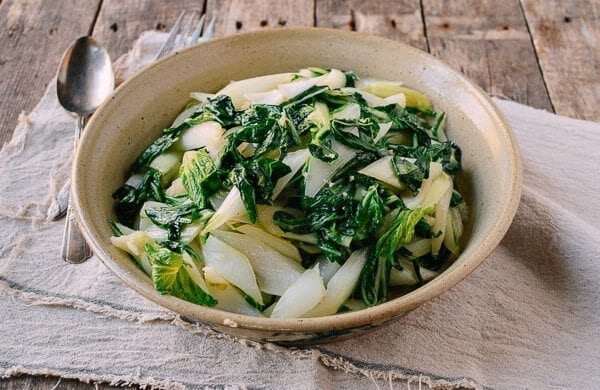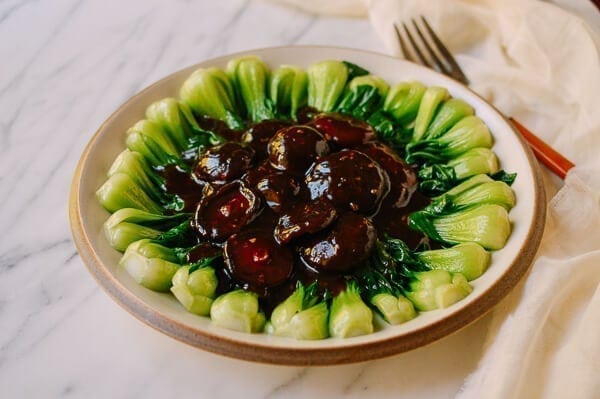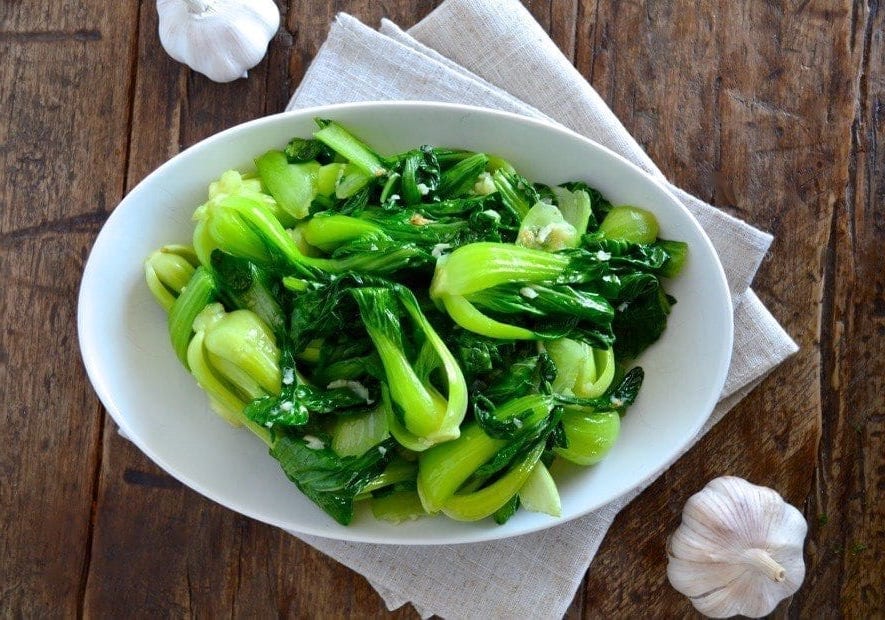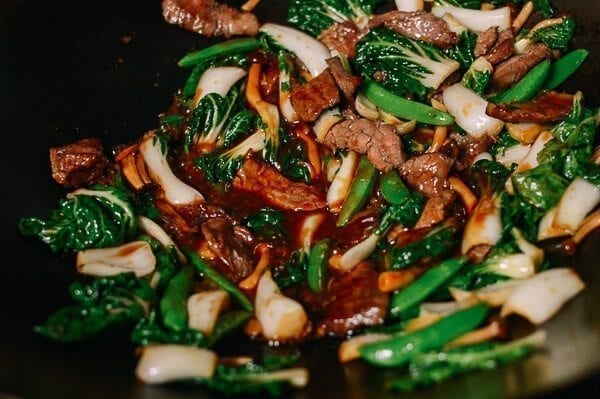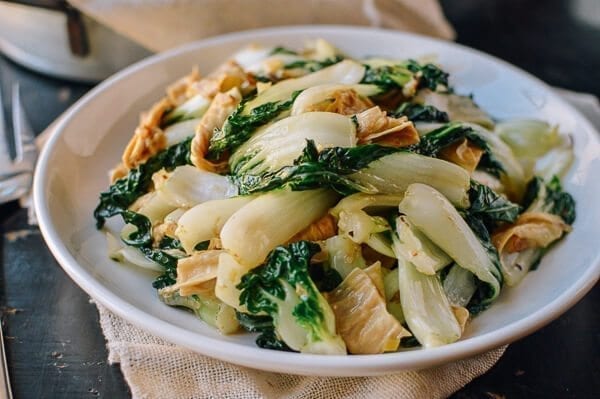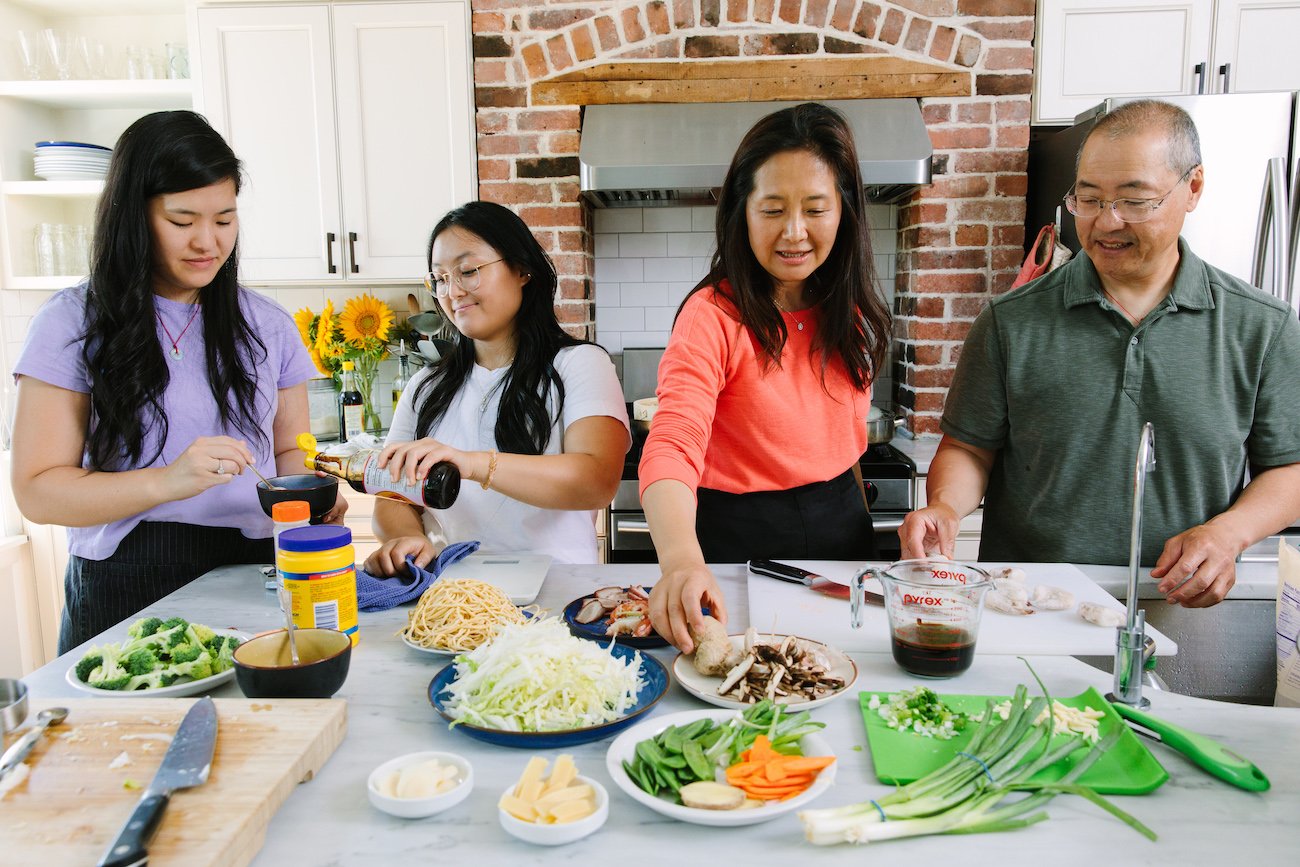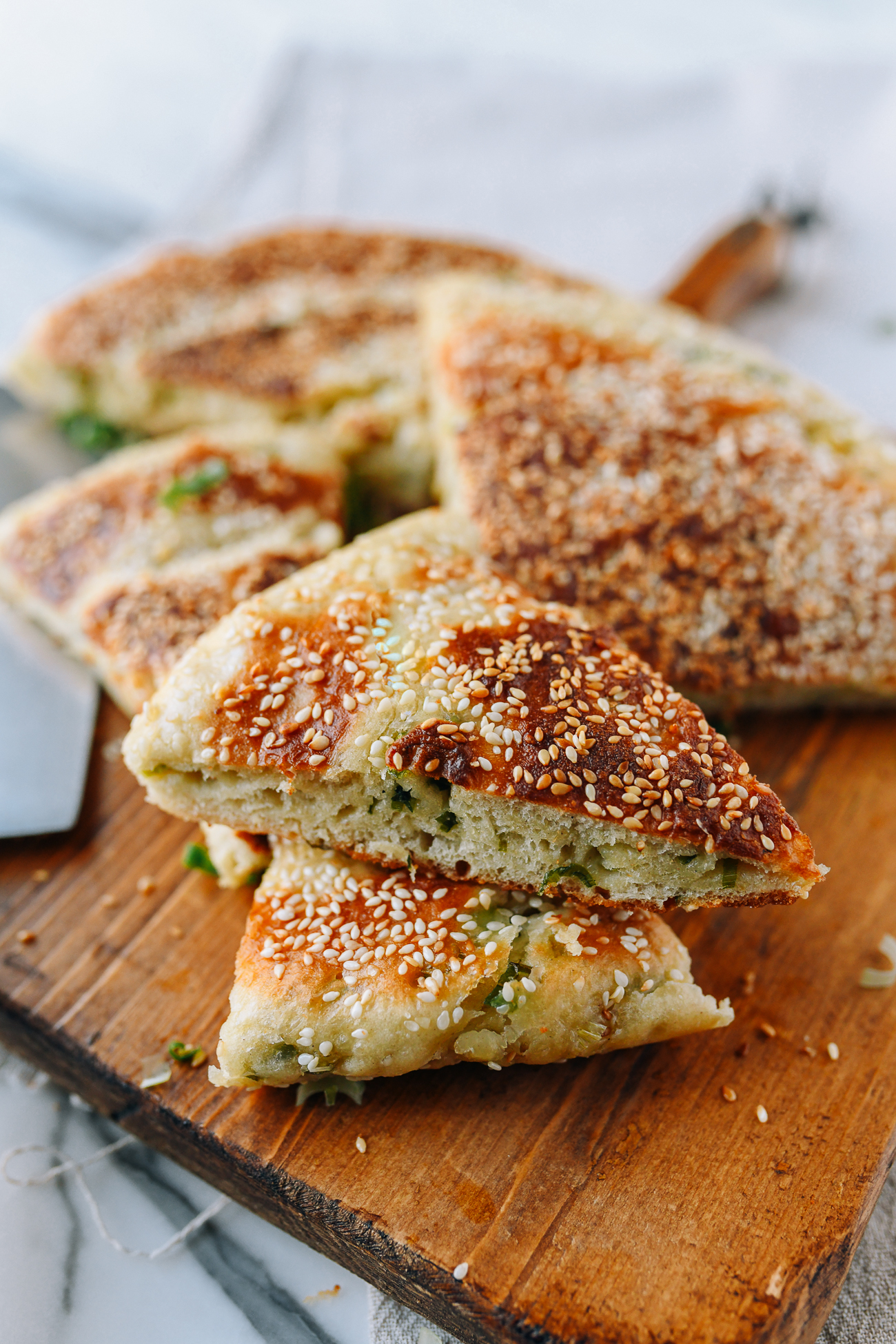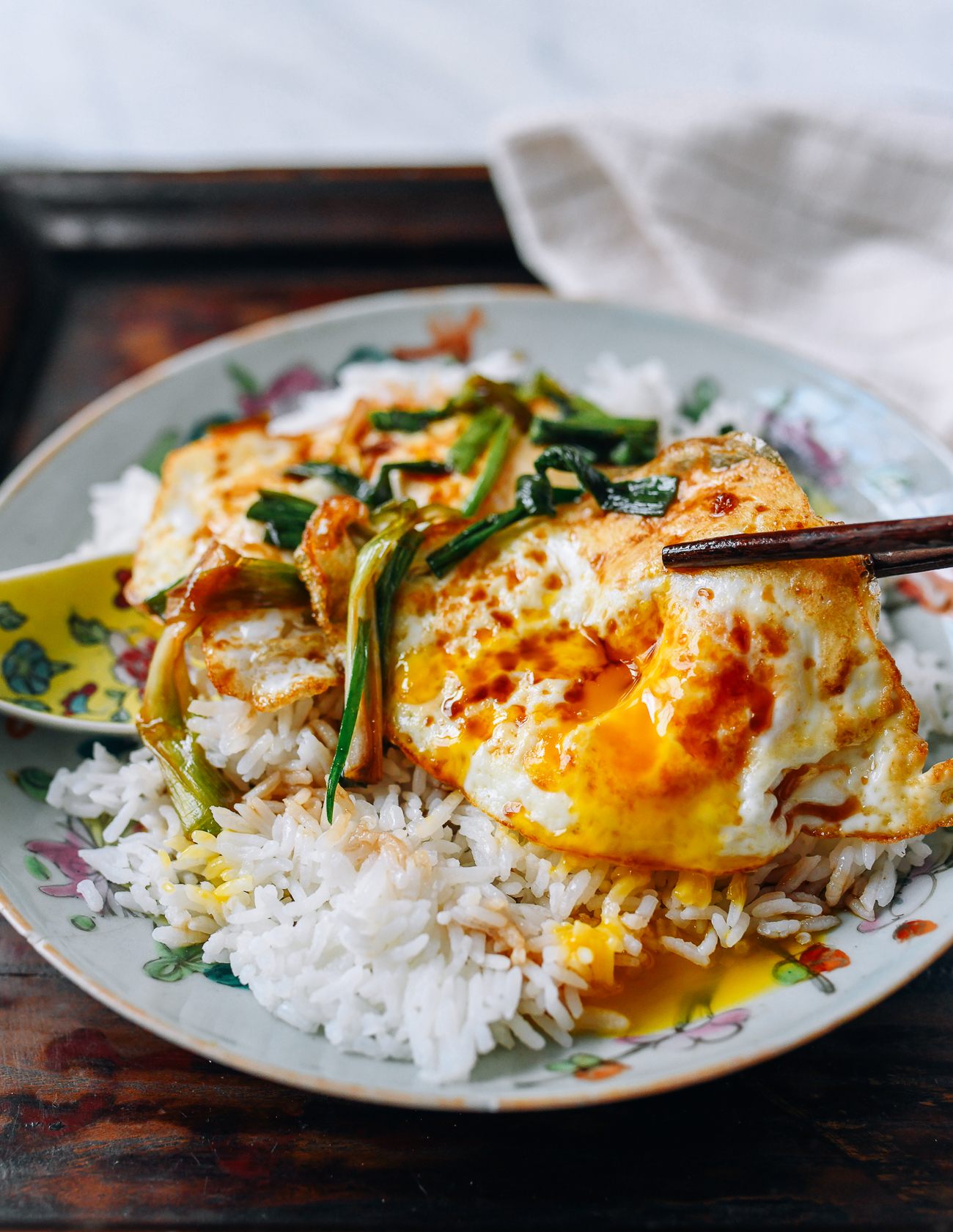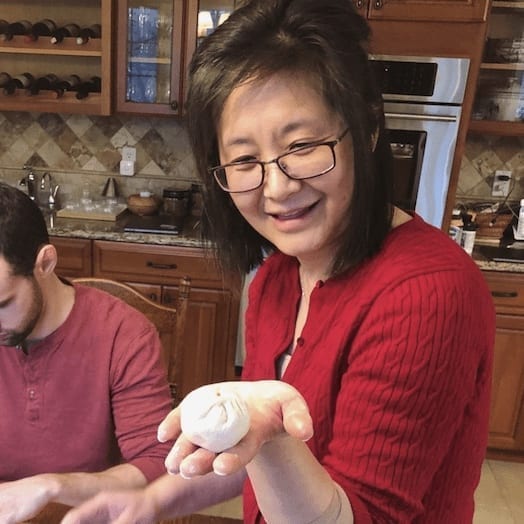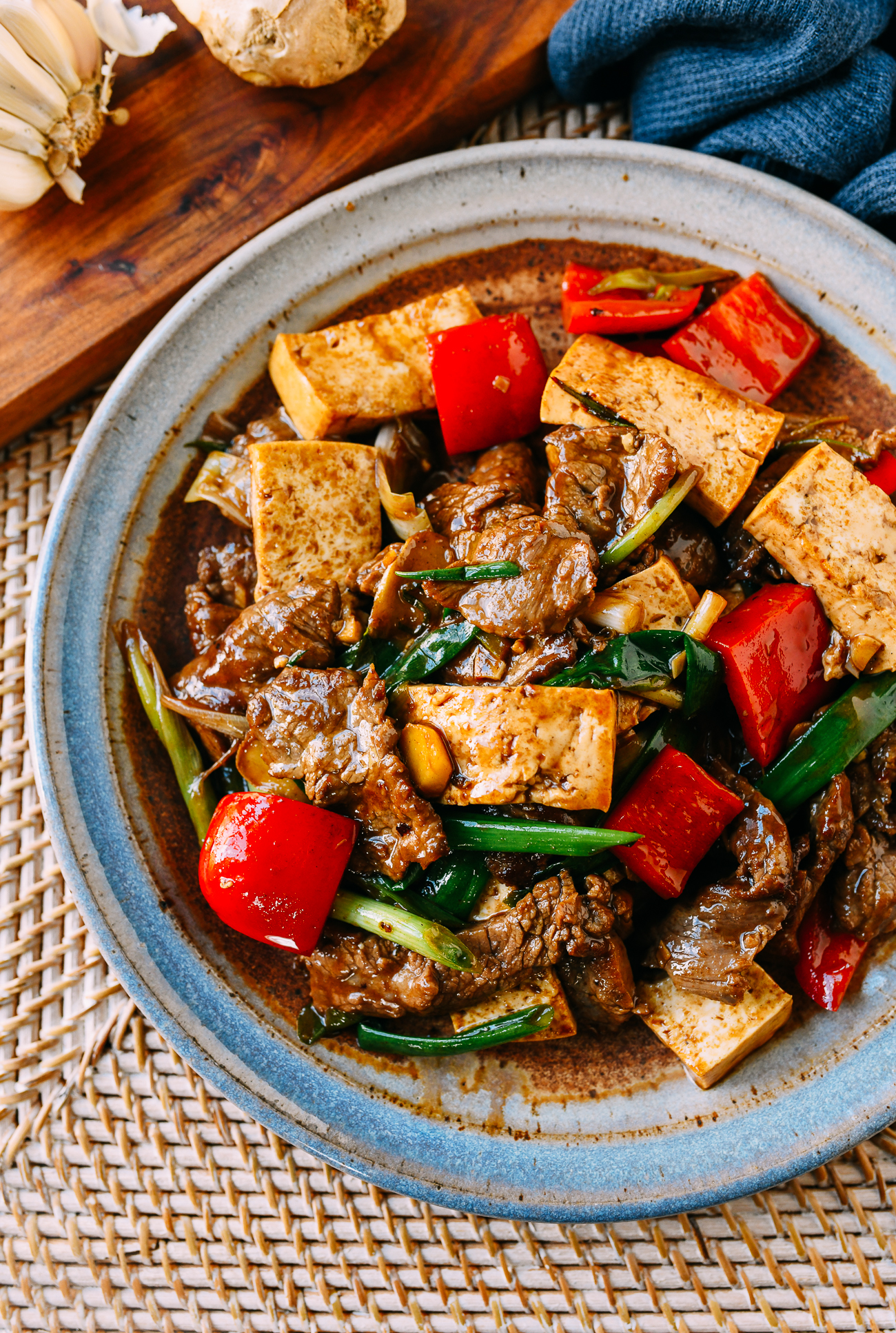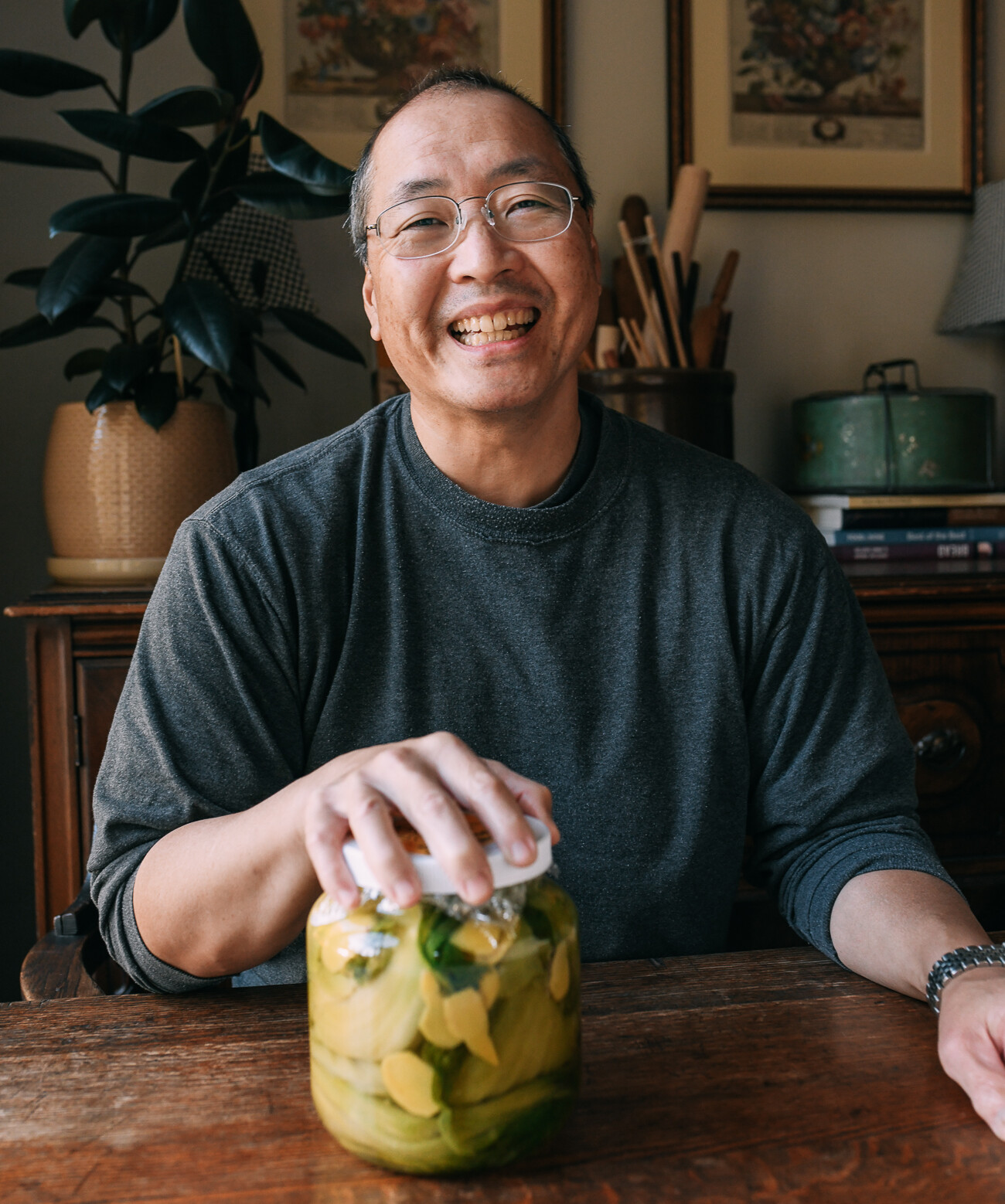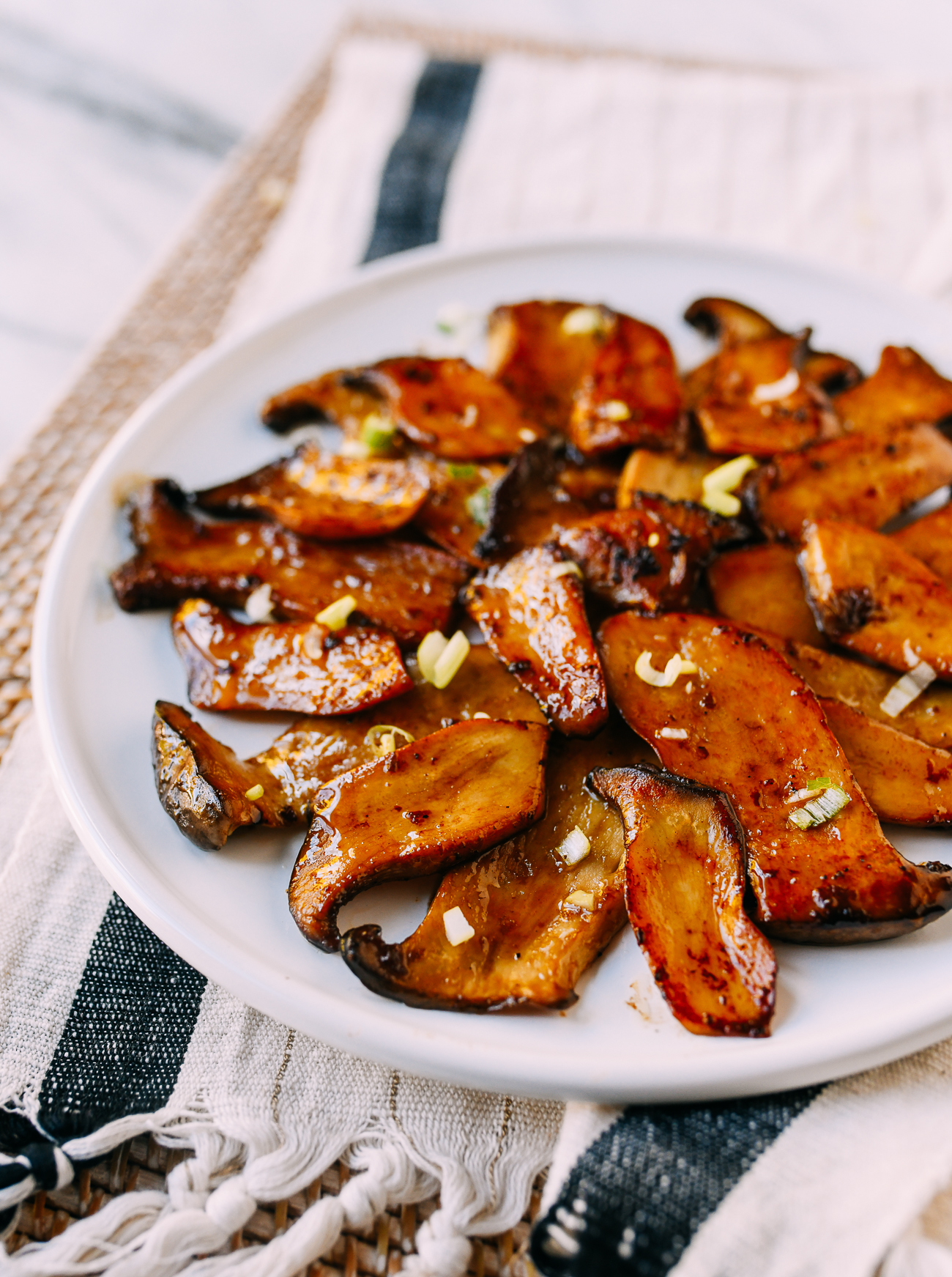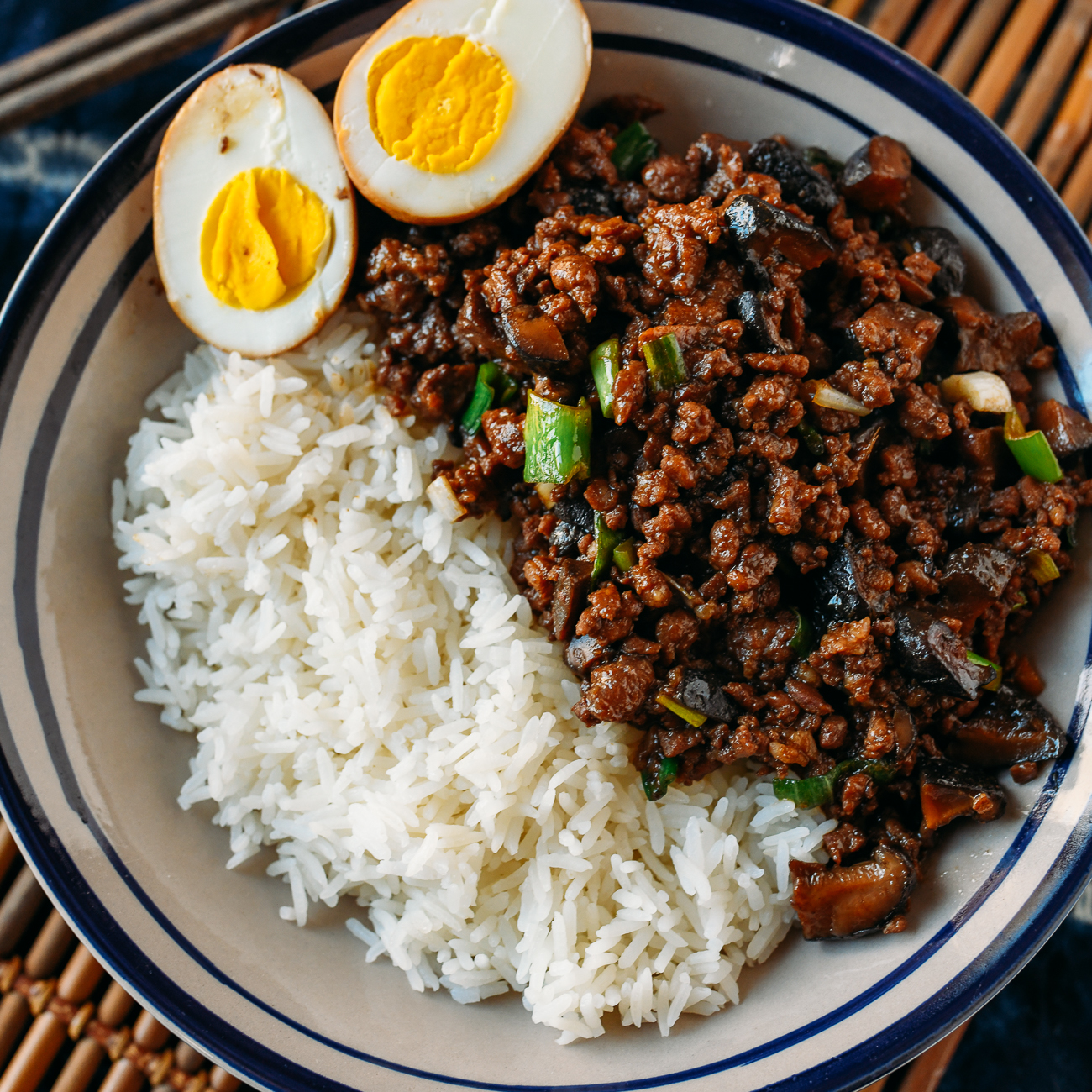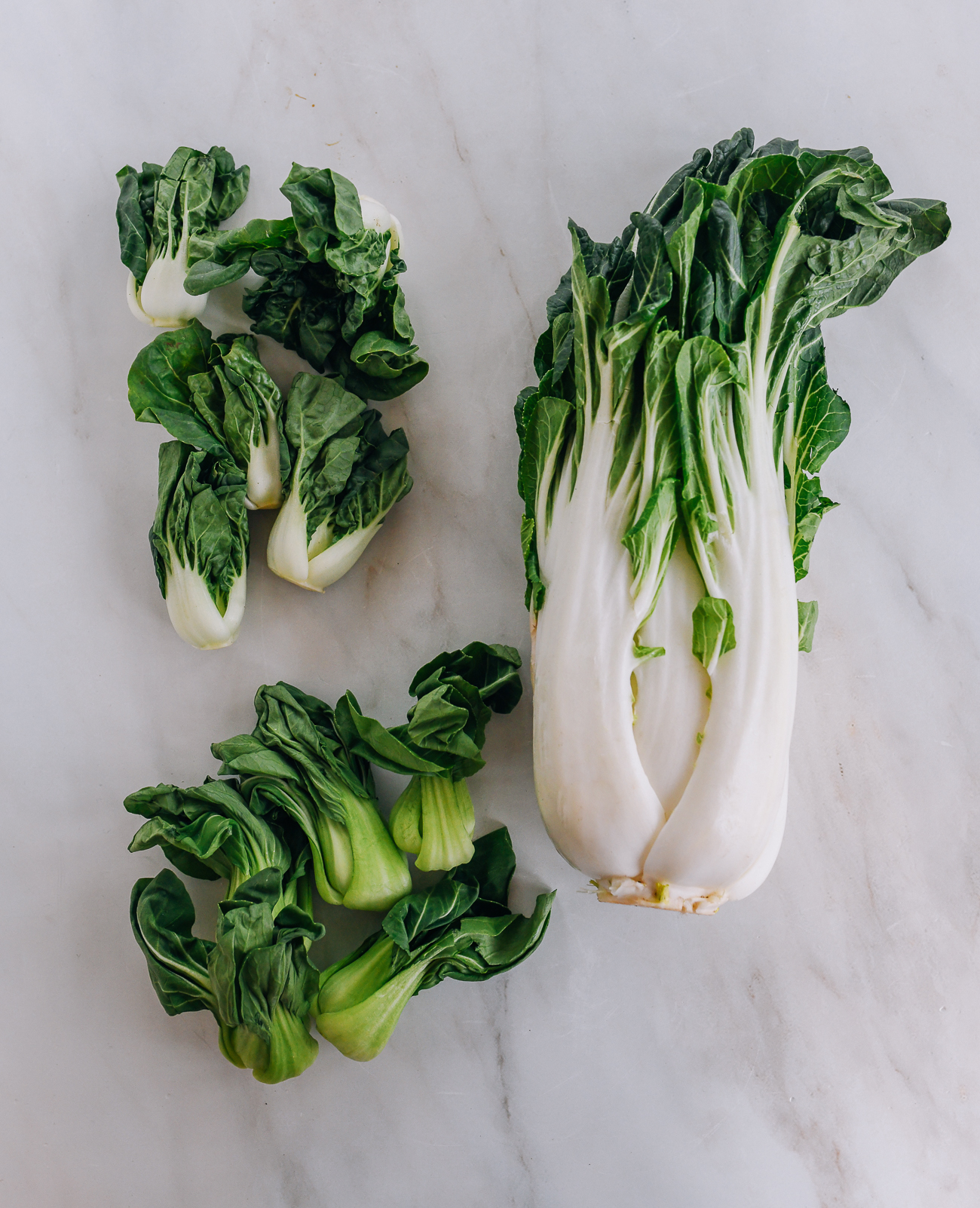
Bok choy (also sometimes spelled pak choy or pok choi) is one of the most commonly available and widely known Chinese vegetables in the United States (and outside of China generally).
There are different varieties, which can cause confusion at the grocery store. This article will clearly explain the various types and how to cook them!
What is Bok Choy?
Bok Choy is a Chinese leafy green vegetable in the cabbage and mustard (brassica) family. It comes in several different varieties, but is generally characterized by stalks attached at the base of the vegetable, like celery or napa cabbage.
Bok choy is actually the Cantonese name of the vegetable (白菜 – báicài in Mandarin, or literally, “white vegetable”). Many early Chinese immigrants to the U.S. were Cantonese, which is why that name has stuck! Don’t confuse it with dà báicài (大白菜 – literally, “big white vegetable”), which is the Chinese word for napa cabbage.
The stems are crisp and relatively thick, and can be white or pale green in color. The leaves can be ruffled or flat/paddle-shaped, ranging from green to dark green.
There is also a wide variety of sizes. Immature baby ones can fit in the palm of your hand, while larger specimens can be as big as a bunch of celery (and usually thicker/heavier)!
It is most commonly stir-fried, but can also be blanched, roasted, or eaten raw in salads.
DIFFERENT Sizes
Generally, there are three sizes: large, medium, and small. In non-Chinese grocery stores, you’ll sometimes find the gigantic ones with white stalks and large, dark green leaves.
These are older and a little bit tougher, but still quite tender as far as leafy greens go. Kaitlin likes chopping them up for salads, as they’re surprisingly sweet and mild.
For the majority of your Chinese dishes, however, you’ll want to go to a Chinese grocery to find the smaller, more tender vegetables. These plants are harvested younger, and have a more delicate flavor and texture.
The type with fat, light green stems come in two sizes: medium and the small/baby size. The smaller of the two is quite common today and our preferred. You may see it referred to as “green bok choy” or “Shanghai baby bok choy.”
You may also see another baby variety with white stems and ruffled dark green leaves. These are called, “dwarf bok choy.”
Smaller vegetables can be cooked whole or halved, while larger ones generally must have their leaves separated and chopped before cooking.
Any variety can make a great stir-fry!
Different Types of Bok Choy
Let’s do a quick recap of the different varieties you may come across. A well-stocked Chinese or Asian market should have many for you to choose from. You can even grow these at home if you like to garden!
Large Bok Choy
This is the type that you’ve likely seen at your local non-Chinese grocery store. They have firm, thick, milky white stems, with dark green, slightly curly leaves. They’re more stem than leaf. The stems are crunchy and sweet. While commonly available, this is one variety that we rarely use in our kitchen.
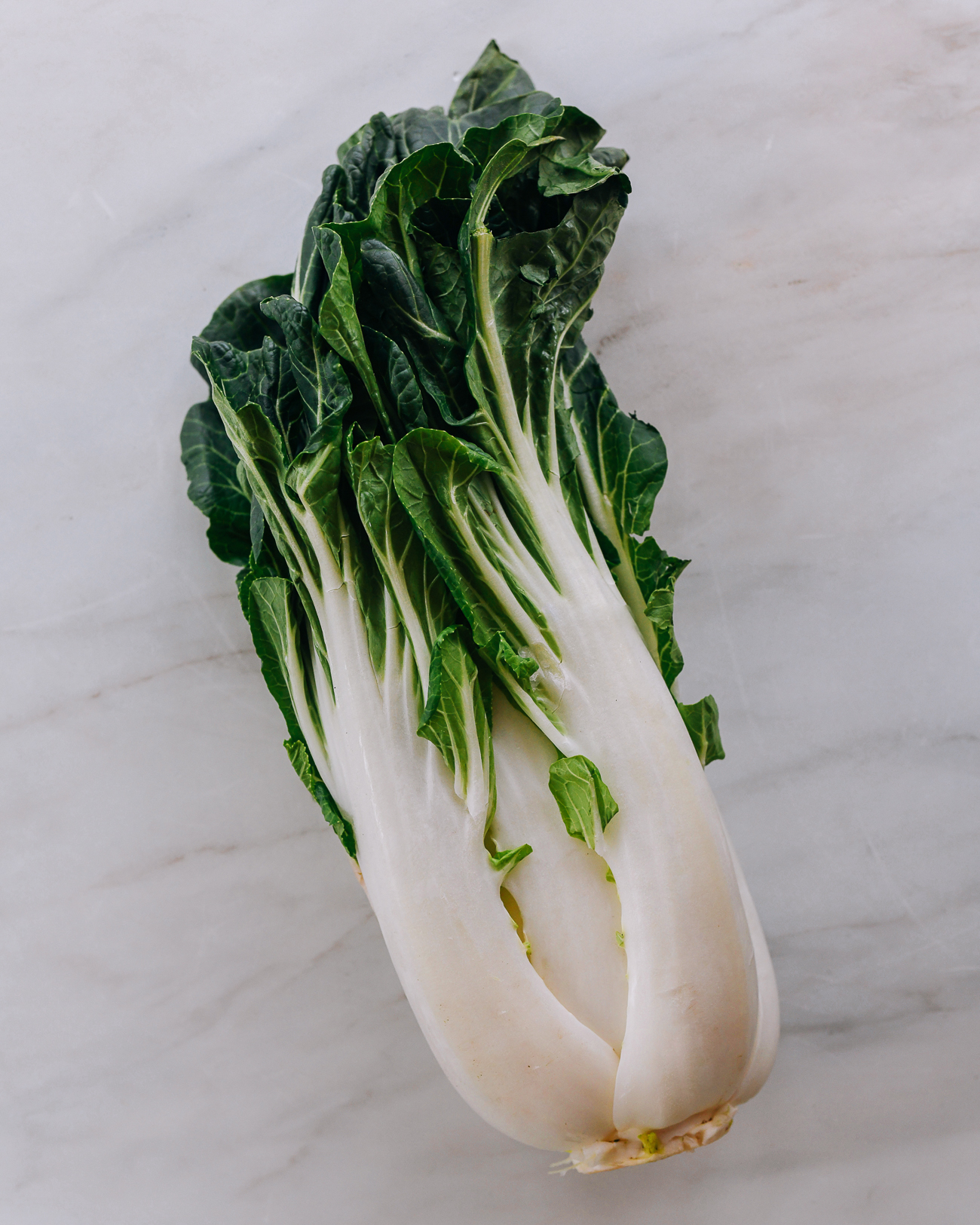
Check out our Basic Stir-Fried Bok Choy Recipe, which uses the large white bok choy variety.
Shanghai Baby Bok Choy
Shanghai bok choy is what we find in restaurants more often than not, with their spoon-shaped flat leaves and light green stems. They tend to be sold in smaller sizes, as they’re more tender, but the larger size can still be found in most Asian markets. We love these smaller, tender vegetables for cooking at home. They make for a much nicer presentation.
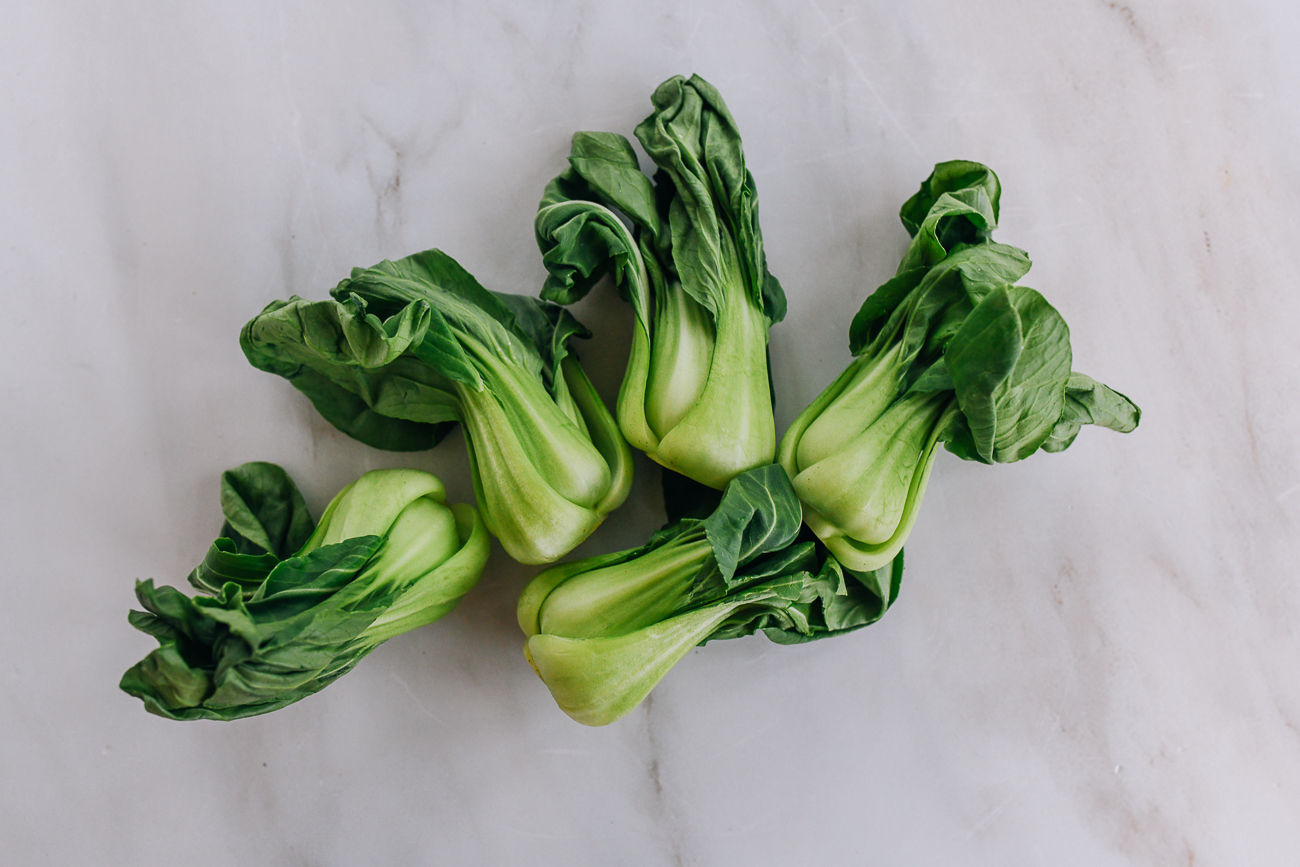
This variety is essential for dishes like Braised Chinese Mushrooms with Baby Bok Choy. Also, be sure to try our super-simple Garlic Baby Bok Choy recipe as a healthy side dish!
Dwarf Bok Choy
In Chinese grocery stores, these are sometimes labeled, 奶油白菜 (nǎiyóu báicài), which translates to “cream bok choy.” (Don’t ask us who comes up with these translations!).
They look like a miniature version of the big white bok choy you find in supermarkets, but they are actually a special hybrid. They are a bit stubbier with shorter, fat white stems and curly dark green leaves.
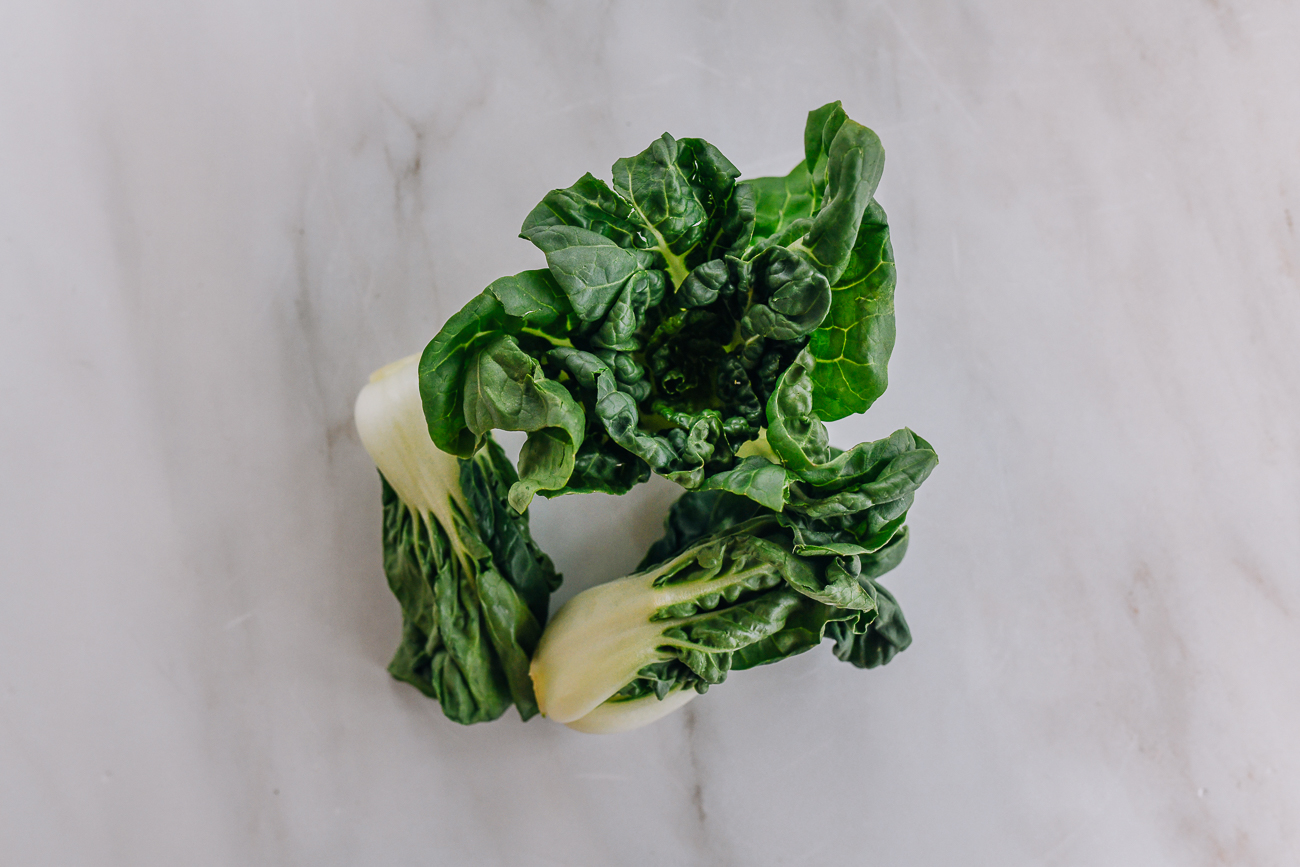
You can see how we prepared this dwarf bok choy in our quick and easy Beef Vegetable Stir-fry and our Stir-fried Bok Choy with Tofu Skin.
Little Bok Choy
Little bok choy (小白菜 – xiǎo bái cài) is a vegetable that I have not seen in the US anywhere. It has white to light green stems, with light green, slightly curly leaves. It almost looks like a smaller, thinner napa cabbage, and it’s delicious with garlic, salt, and oil.

How to Cook Bok Choy
Like any leafy green, any bok choy is typically pretty sandy, so be sure to wash it thoroughly! Make sure there’s no sand or dirt between the layers of each bunch. Cutting them in half or in quarters lengthwise prior to washing helps things along.
Here’s how we do it:
- Trim away the tough base of each bundle, and break apart the bundles into individual leaves. Alternatively, if using smaller varieties, you can simply cut the bundles in half lengthwise to expose the inner layers.
- Add the vegetables to a large bowl of cold water, and fully submerge the leaves. Agitate the leaves with your hands to loosen any dirt or sand, and soak for 5 to 10 minutes.
- Lift the vegetables out of the water and transfer to a colander. You should see sand/grit settled at the bottom of the bowl. Empty the bowl and rinse it out. (If you don’t want to waste the water, water your plants with it!)
- Add the vegetables back to the bowl, cover with cold water again, and repeat 1 to 2 times more for a total of 2 to 3 washes, depending on how sandy the vegetables are.
Bok Choy Recipes
- Bok Choy with Braised Mushrooms (Shanghai baby variety)
- Garlicky Baby Bok Choy (Shanghai baby variety)
- “As You Wish” Vegetables (Shanghai baby variety)
- Stir-fried Bok Choy with Tofu Skin (dwarf variety)
- Steak Stir-fry on a Bed of Bok Choy (dwarf variety)
- Basic Stir-fried Bok Choy (large variety)
- Roast Pork with Chinese vegetables (large variety)
- Vegetable Chow Mein (any variety)
- Beef Vegetable Stir-fry (any variety)
BUYING & STORAGE
Look for tender, bright green leaves with firm stems and no signs of yellowing or wilting.
Store in the refrigerator towards the front (storing it in the back of the refrigerator may cause the delicate stems and leaves to freeze, which will compromise texture and flavor).
If it is very fresh, use it within 1 week. If it looks a little bit wilted, use it within a few days. You’ll actually notice that soaking it in cold water during the washing process revitalizes it a bit and plumps it back up!
Be sure to check out our Chinese vegetables glossary page for more insights on vegetables you may see at your local Chinese grocery store!
